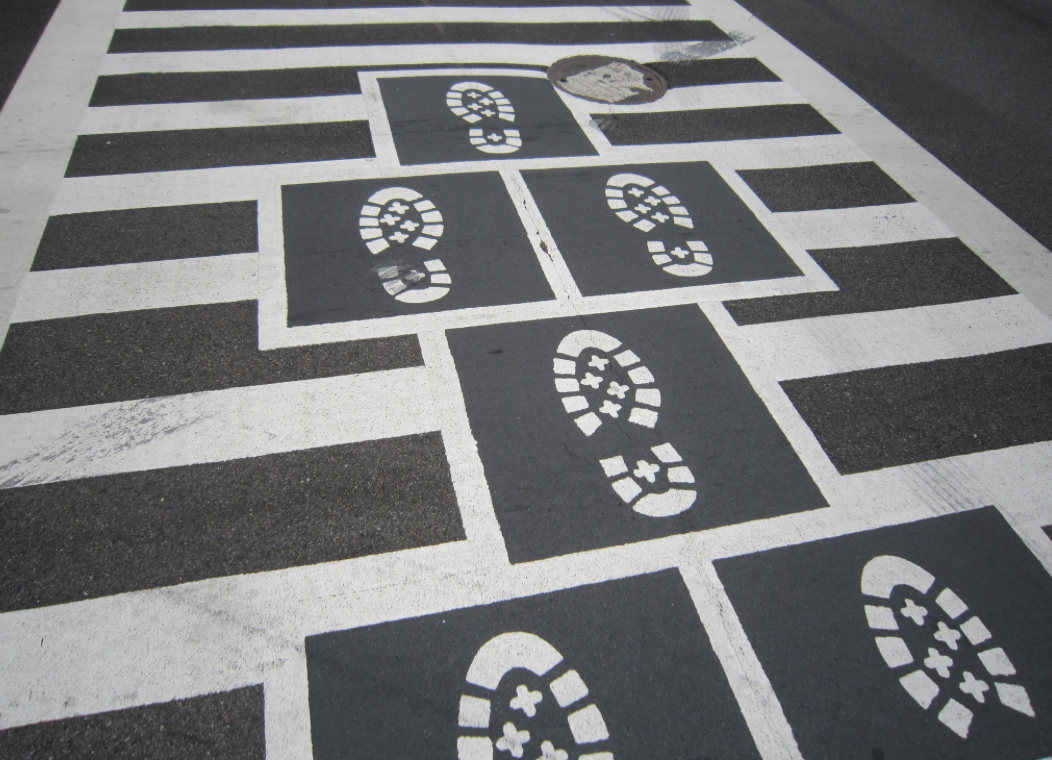In 2012, city planner Jeff Speck published his Walkable City. "That book did a decent job of inspiring change, but it didn’t tell people exactly how to create it," Speck explained. So, he followed it up with Walkable City Rules, out in 2018, with step-by-step instructions for making urban spaces more accessible and walkable.
He'll be sharing some of his vision and insights with Houston Wednesday evening but he's also offered a number of lessons from the book on Twitter:
Today I am tweeting from Rule 34. Adopt a Downtown Speed Limit: To make speed limits stick, make them district-wide.
— Jeff Speck (@JeffSpeckAICP) January 6, 2019
From #WalkableCityRules (1/7) https://t.co/GhjG3AFWyn
When was the last time you noticed a speed limit sign downtown? Chances are, you weren't looking for one while driving through an urban area, unlike on a highway, argues Speck. Indeed, he notes, city streets are often designed to support speeds well above the legal limits. "This mistaking of city streets for highways has probably killed more Americans than any other form of professional negligence," he followed up in the thread.
So how can speed limits in urban areas be more effective? One way, says Speck, is more aggressive enforcement. But another is to create a uniform-speed and campaign for a special area or district, as a way to make the limit "stick in people's minds."
Slogans help as well. Speck mentions the international "20's Plenty for Us" campaign that aims to lower speed limits based on research showing small reductions can have big impacts on traffic fatalities.
Speck distills the importance of speed limits in his book, excerpted at CityLab, saying, "The basic message to remember is that you are about five times as likely to be killed by a car going 30 as a car going 20, and five times again as likely to be killed by a car going 40."
There are a hundred reasons to make cities more walkable, but perhaps the easiest one to explain is safety. It is also the one that is hardest for opponents to fight; nobody likes seeing people get hurt. In any effort to improve walkability, safety has to be front and center(2/3)
— Jeff Speck (@JeffSpeckAICP) December 23, 2018
Supplementing speed limit reductions with things like Vision Zero and thoughtful street design will improve safety for all.
Speck also takes the time to address some popular but nuanced ideas, including the craze for pedestrian malls and how to make spaces not only safe but engaging.
Today I am tweeting from Rule 30. Close a Street to Cars—Maybe: In the right circumstances, pedestrian streets can thrive. From #WalkableCityRules (1/6) https://t.co/zL1o8CC0o3
— Jeff Speck (@JeffSpeckAICP) December 20, 2018
"More than two hundred North American main streets were turned into pedestrian malls in the 1960s and 1970s, most at great expense," he continued, noting that many proponents of the car-to-pedestrian transformation don't know the history or that most of those streets did not thrive the way intended and many were converted back to auto traffic.
There were some notable successes of course. So what made the difference? "You’ll never guess what it is: stores that don’t need cars," he shared in the thread. "This sounds obvious enough, but nobody stopped to consider it the first time around."
He expands on what makes areas engaging for pedestrians in his book. "What makes a potential shopper more likely to enter a store? What makes a resident more likely to interact with passersby? What makes pedestrians more likely to stop and hang out for a while?"
The answer: thick facades. "Thick facades take myriad forms," he explains. "In retail architecture, examples include sidewalk dining, benches against facades, placards and merchandise in the frontage zone, entry alcoves flanked by display windows, roll-up and other wide-open warm-weather facades, arcades, window counters and window bars (the drinking kind), and upstairs balconies or other overhangs. Most retail facades should have some form of an awning. The goal is to blur the distinction between the shop and the sidewalk."
Also among Speck's critique, and particularly relevant for Houston, urban freeways.
Today I am tweeting from Rule 28. Tear Down a Highway: Replace downtown highways with walkable boulevards. From #WalkableCityRules (1/6) https://t.co/zL1o8CC0o3
— Jeff Speck (@JeffSpeckAICP) December 16, 2018
"Roads in the air cost more than roads on the ground," Speck points out in his thread. And because the switch to boulevards boosts values along the route, the added revenue could be reinvested in transit.
"Some highways are easier to tear down than others. The best candidates are spurs and ring roads—routes that provide mostly redundant access to city centers," he continued. "But, under the right circumstances, major interstates deserve replacement as well."
At his talk Wednesday evening, Speck will talk Houston highways, specifically the I-45 project, which will rework the city's downtown highways and change neighborhoods anxiously watching the process.
It won't be his first visit to the city. Back in 2016, for example, Speck told an audience that included Mayor Sylvester Turner that the city's "approximate 283 traffic deaths annually" was like "a 9/11 every decade."
He offered advice then to transform downtown that seems to be mostly unheeded, including eliminating the tunnels, using street parking as a barrier for bike lanes, put the streets on a "diet" and make the multi-lane, one-way roads into slimmer two-way routes and more.
What will he have to say to Houston Wednesday evening?
See you in #Houston on 2/27. I'll have something to say on the proposed highway widening. . .https://t.co/6vR1pwoImy
— Jeff Speck (@JeffSpeckAICP) January 8, 2019

